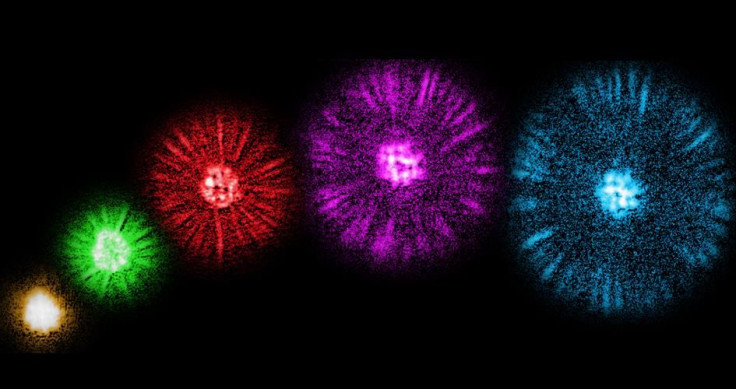Atomic Fireworks: Streams Of Atoms Shooting From Super-Cooled Bosons Observed

A team of researchers from the University of Chicago were treated to atomic fireworks recently when they decided to cool a boson to sub-zero temperatures. This discovery is not all flash though, the light-show also led to the discovery of a new form of quantum behavior.
"This is a very fundamental behavior that we have never been seen before; it was a great surprise to us," said study lead author and professor of physics at the University of Chicago, Cheng Chin. The study was published in the Nov. 6 issue of the journal Nature. The findings brought to light details about a phenomenon that was previously thought to be a well-understood system.
The team looked to study bosons in a special state called a Bose-Einstein condensate. This is achieved by cooling down temperatures to near absolute zero. When this happens the bosons will all condense into the same quantum state. When the team added a magnetic field into the picture, the atoms started moving around. This caused collisions between the bosons which sent out chunks of flying condensate. The ejection pattern is where things get interesting. The team saw bright jets of atoms shooting from the rim of the disk, like nano fireworks. When the pattern was studied, the atoms — which according to predictions would fly in random directions — actually left in a uniform field in clumps.
"If you'd asked almost anyone to predict what would happen, they would have said that these collisions would just send atoms flying off in random directions," said postdoctoral fellow Logan Clark, the first author of the study, in a news release on the University of Chicago website. He and co-author and postdoctoral fellow Anita Gaj were the first to view the phenomenon. "But what we see instead are thousands of bosons bunching together to leave in the same direction," Clark added.
-University of Chicago
"It's like people forming a consensus and leaving in groups," Chin added in the release.
This phenomenon could exist in other systems, according to the team. This is why it will be integral to understand the underlying physics of other quantum systems. The team also believes that these particular condensed boson ejections could be used widely in the future.
"For example, if you sent a particular atom in one direction, then a bunch more would follow in that same direction, which would help you amplify small signals in the microscopic world," Clark said.
When both the energy and the particles are not in their ground state during interaction, it is known as a "driven" quantum system. This area has grown in prominence in the science sphere in the recent past. The system used in the study falls under that category, making the findings all the more exciting and significant. The team speculates that although the physics of systems in these quantum states is not well understood, it could be essential in the engineering of useful technology.
Bose-Einstein is already a widely studied branch of quantum mechanics. However, nobody had observed this before, making this the first time someone was successfully able to document this behavior, the release said.
"If you see something crazy in this simple experiment, it makes you wonder what else is out there," said graduate student Lei Feng, a co-author of the paper.
© Copyright IBTimes 2024. All rights reserved.




















